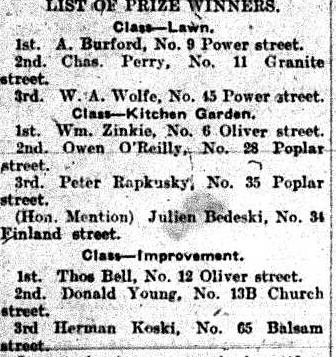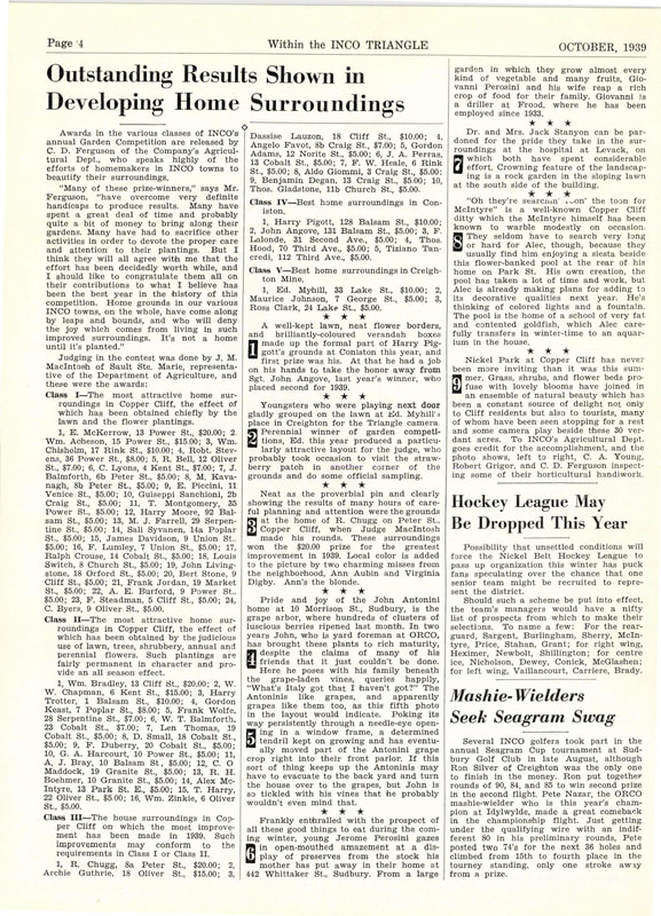|
Gardening Competitions
April 28, 1915, The Sudbury Star announced a gardening competition for Copper Cliff. Prizes were offered by the Canadian Copper Company to tenants for the best annual garden displays. “Amateur gardening is a possibility in the Cliff, despite sulphur smoke and other handicaps which are more imaginary than real.” Prizes for the best lawn, best garden and best improvement to premises each were $100. 1st prize; $50. 2nd prize and $25. 3rd prize. Three judges were to make periodic tours and eligibility was limited to amateur gardens, not those employing professional gardeners. “Major Silvester announced that extra wagons will be placed on the clean-up service next week, and householders are requested to co-operate with them by raking their garbage into heaps, as it is only the duty of the clean-up men to shovel the heaps into the wagons, not to rake over yards themselves.” In September of 1916 the judges announced “a great improvement and much keener competition than other years, and attribute it to the removal of the roast beds further away from the town.” Judges were George R. Craig, Jos Wilson and T. D. Jarvis. |
Nickel Park |
The former site of an open roast bed, the Copper Cliff park are was rehabilitated and a Victory Garden was planted with potatoes for the war effort during World War I.
In April of 1917, the Canadian Copper Co. announced the planning of shade tress, small trees and shrubbery on a large scale. Work began on the 25 acre ‘Nickel Park’ in April of 1917. The park was bounded by School, Granite and Park Streets and Creighton Road. The plans included a baseball diamond, golf links, tennis courts, three thousand trees, shrubs, and vines were to be planted that year. The park hosted baseball, softball, Victoria Day celebrations, parades, a thanksgiving victory service in 1945; Legion field days, the first annual D-Day celebration in 1950; a Drumhead Service 1951, concerts, and a 9-hole golf course. |


